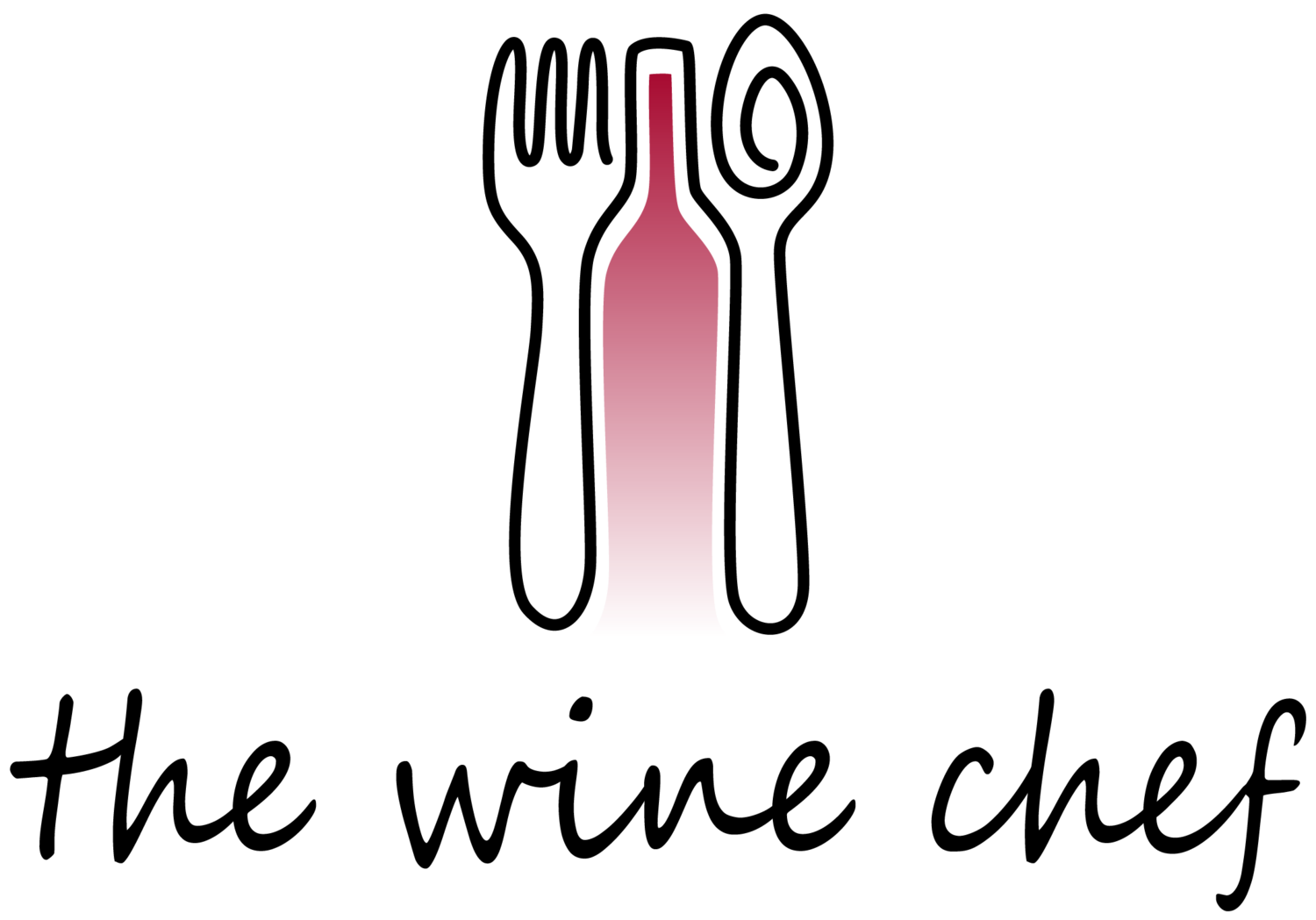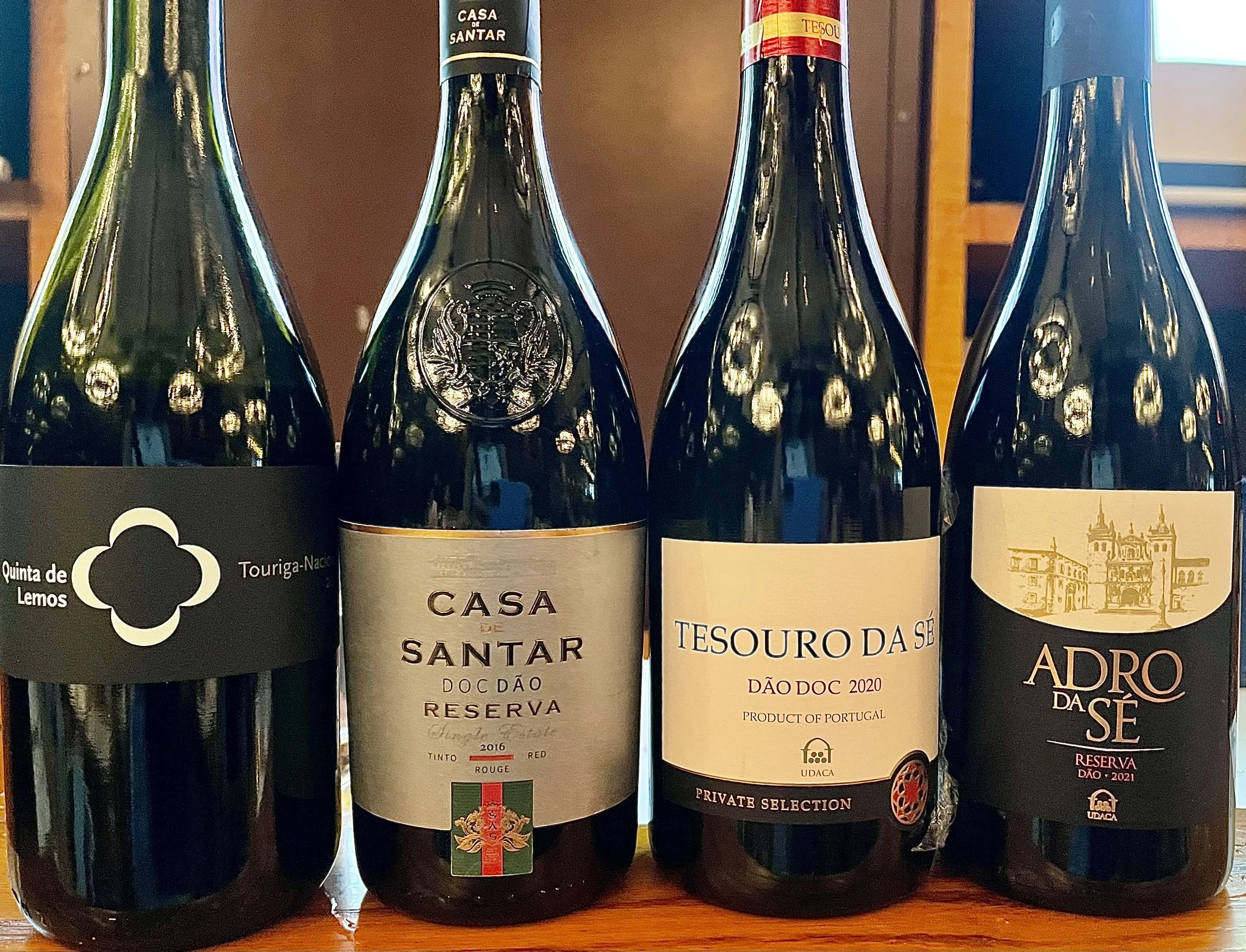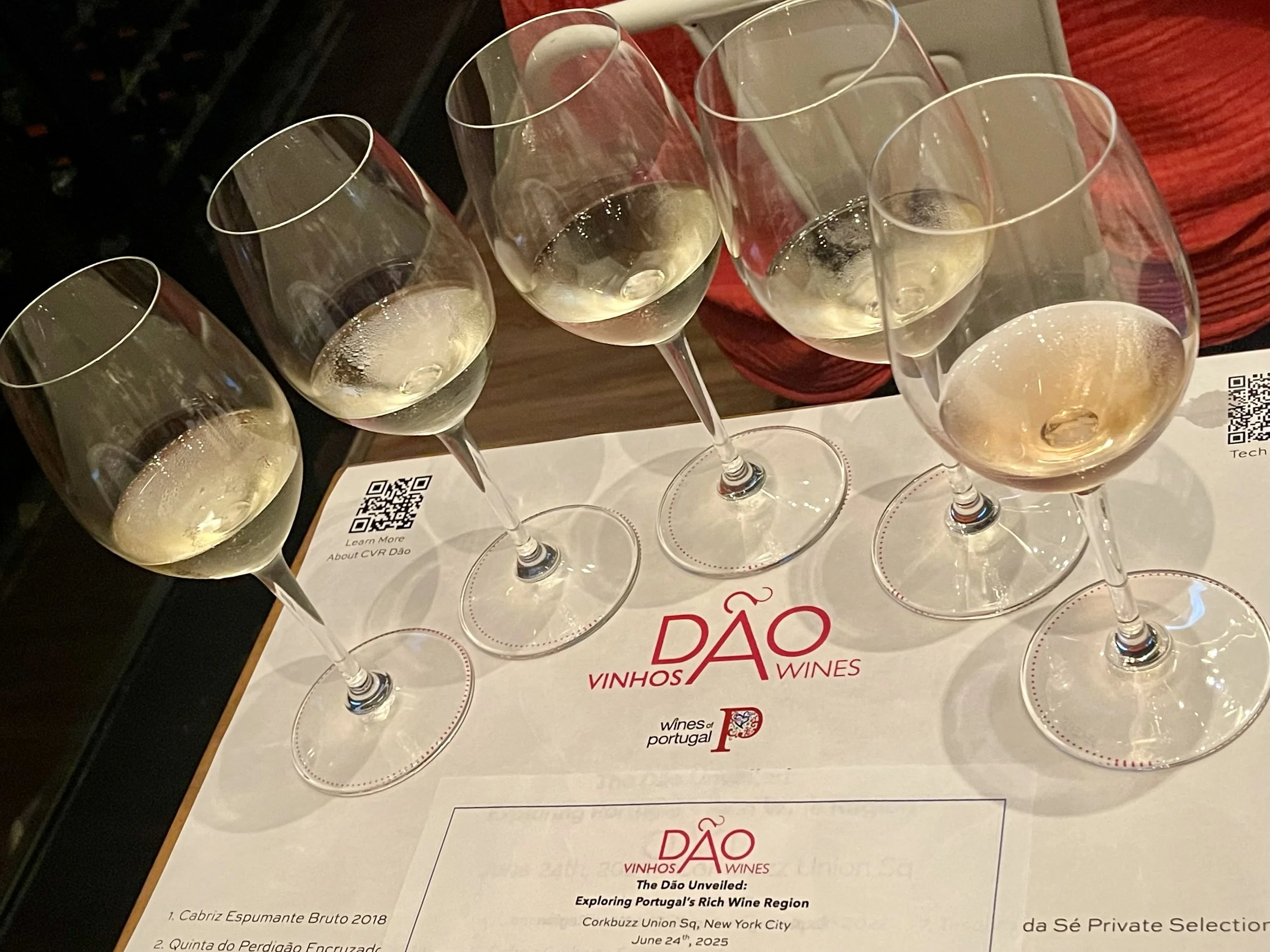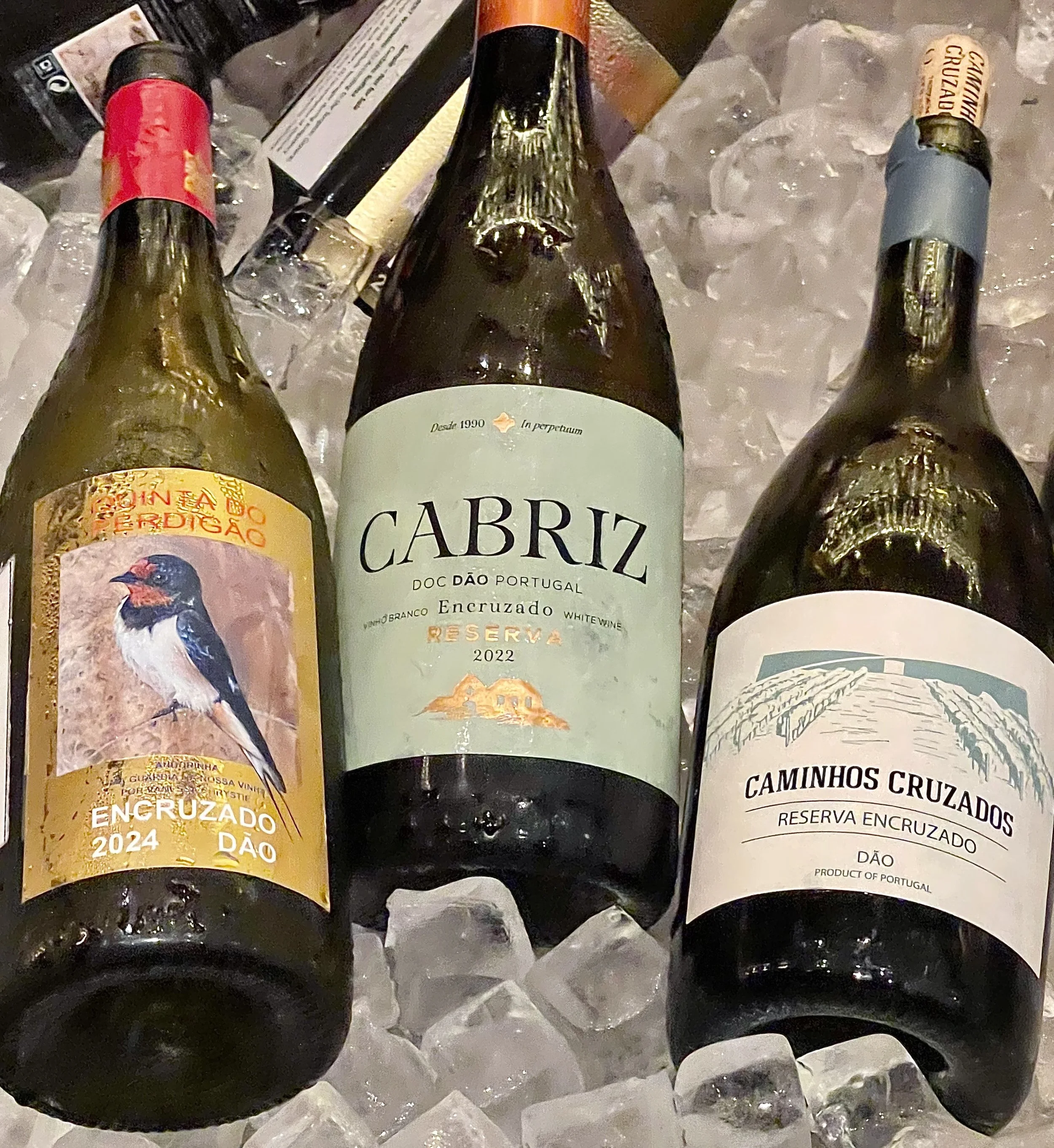From Granite and Forest: The Undiscovered Beauty of Dão Wines
/Wine has a way of opening up the world. Beyond the familiar, well-trodden regions lies a whole universe of discovery. There are entire countries and wine styles that remain largely unknown, and exploring them can be one of the greatest joys of wine appreciation.
Take Dão. Even for those somewhat versed in Portuguese wine, the mention of it often draws blank stares. And you’ll rarely see a Dão wine on restaurant lists despite the Dão region producing some of the country’s most distinctive and age-worthy wines.
The vines are surrounded by rugged, forested terrain and cultivated in granite soils at high elevations. Only about 3.3% of the land is planted with vines, with most of the natural landscape deemed protected areas. The resulting wines offer complexity, elegance, and freshness, often at a great value.
Evolution
The quality of Dão wine hasn’t always been as stellar as it is today. For much of the 20th century, the region produced tough, rustic reds. Cooperatives controlled most of the region’s production, and these state-backed enterprises valued volume over quality. The wines were often overly tannic and lacking finesse, and few sommeliers could recommend them in good faith. That reputation clung stubbornly to the region for decades.
In recent years, however, Dão has undergone a renaissance. Major investment, a new generation of winemakers, and a wave of independent estates have transformed the viticultural landscape. It's been quite the turnaround, with the number of small, quality-driven producers continuing to grow.
Under The Radar
Tucked inland between the Douro and Bairrada wine regions, the Dão is a small, mountainous area in northern Portugal that remains largely off the beaten path. Its viticulture dates back thousands of years, predating even the arrival of the Romans in the 500s. Dão was officially recognized as a wine region in 1908, making it one of the oldest in Portugal, and its boundaries have remained unchanged since then. Roman roads and gates still dot the landscape, reminders of its long history.
The Dão region is divided into seven sub-regions, each with a distinct microclimate. Serra da Estrela, home to Portugal’s highest peak, is the coolest area and is known for delicate, lifted wines. Warmer zones, like Silgueiros and Castendo, yield fruit with greater ripeness and depth.
The climate is continental with some maritime influence, characterized by cold, wet winters, warm, dry summers, and abundant rainfall, like that of Germany’s Mosel Valley. Ringed by mountains, the region is shielded from Atlantic winds while benefiting from the cooling effects of elevation and well-drained soils.
Dão’s granite soils are similar to those in Beaujolais and the Northern Rhône. They are naturally low-yielding, producing concentrated grapes and wines that are fresh, mineral-rich, and structured. Despite increasing recognition, many bottles still sell for under $25 retail, making Dão a go-to region for value.
Pro Tip: Keep an Eye on the Wine List
Occasionally, Dão wines make it to top-tier restaurants. At The Modern, a two-Michelin-starred restaurant in New York City, the wine list includes several Dão gems, including a 2015 Quinta do Perdigão Alfrocheiro for $75 and a 2007 Quinta de Lemos blend for just $70. Not bad for beautifully aged reds from one of Portugal’s most exciting wine regions.
Wines of Substance and Style
Red wine is the primary focus in Dão, accounting for about 80% of the region’s production. These are not the heady, ultra-ripe reds you might expect from a southern European wine region. Instead, Dão reds are often aromatic and structured, balancing fruit and floral notes with freshness.
Amazingly, more than 500 indigenous grape varieties are permitted in the Dão, a testament to Portugal’s incredible viticultural diversity, but most wines are built around the core players.
For reds, the star grape is Touriga Nacional, arguably Portugal’s most important variety. Native to the Dão, it thrives in this cool, high-altitude environment, where it shows floral aromatics, deep color, and firm but polished tannins. It’s often blended with other local reds like Tinta Roriz (a.k.a. Tempranillo), Jaen (known as Mencía in Spain), and Alfrocheiro, a dark-skinned grape prized for its color and soft texture.
The red wines are extremely food-friendly, pairing beautifully with cheeses and rich dishes like stews, braised meats and vegetables, as well as all kinds of cured sausages and charcuterie.
White wines, while smaller in volume, are no less intriguing. The most celebrated white grape here is Encruzado, a variety that produces some of Portugal’s most elegant, age-worthy whites. Encruzado wines are often crisp in youth, with notes of citrus, peach, and floral aromas, but they also develop a nutty, textured complexity with age, especially when aged in oak or on the lees. Other key white varieties include Malvasia Fina and Bical, which add aromatics and body.
The whites, especially Encruzado, shine with grilled codfish and octopus, creamy cheeses, and even lightly spiced dishes—thanks to their balance of freshness and texture.
Dão Wine Producers to Look For
While the Dão remains relatively niche in the U.S. market, several top producers are increasingly available in wine shops and restaurants across the country.
Quinta dos Roques is a benchmark estate, producing excellent varietal Encruzado as well as elegant reds based on Touriga Nacional.
Casa da Passarella, located in Serra da Estrela, is known for vibrant wines with a sense of place and a strong commitment to traditional methods.
Cabriz, one of the region’s largest and most recognizable names, offers a wide range of approachable wines—including a fantastic sparkling made with indigenous varieties—all at very reasonable prices.
Niepoort’s Dão project, Quinta da Lomba, is worth seeking out for fans of low-intervention winemaking and mountain terroir.
Quinta do Perdigão is a certified organic, small, family-run estate with just 8 hectares of vines, many approaching 30 years old. The wines reflect their meticulous, hands-on approach and the purity of their granite soils, especially their deeply aromatic Touriga Nacional and fresh, mineral-driven Encruzado.
Álvaro Castro is one of the most respected names in the Dão, producing elegant, age-worthy wines from his two estates: Quinta de Saes and Quinta da Pellada. Castro's wines consistently rank among the best in Portugal, offering structure, finesse, and sense of place.
Dão wines are proudly Portuguese and worth seeking out. You’ll be rewarded with an excellent wine that won’t break the bank, nor overpower what’s on your plate—reasons to keep a few bottles on hand.









